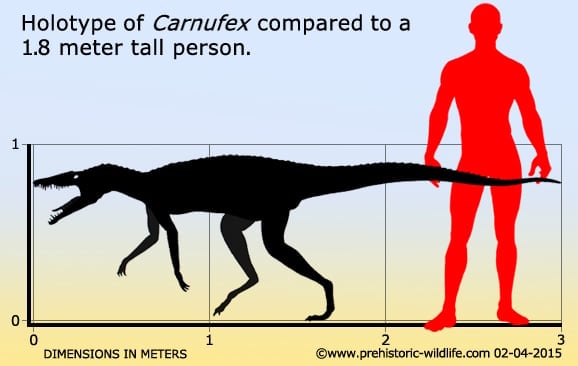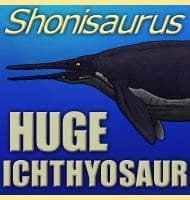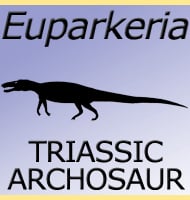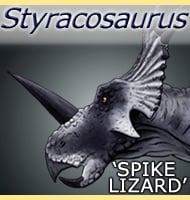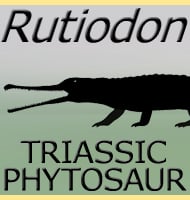In Depth
Described in 2015, Carnufex may well have been one of the key predators that lived in what would become the eastern USA during the Triassic about 231 million years ago. Carnufex was a crocodylomorph, a distant relative to today’s crocodiles, and one that seems to have been a bipedal predator of moderately sized animals. The authors of the 2015 description have noted several features of the known bones of Carnufex making it stand out from related genera as a distinct genus. They also noted that the skull of Carnufex seems to be quite transitional linking differences between different groups of crocodylomorphs. As a fairly fast bipedal predator, Carnufex may have filled an ecological gap that had not yet been filled by the emerging theropod dinosaurs, though ultimately by the Jurassic, the theropod dinosaurs would have replaced crocodylomorphs like Carnufex as top predators.
The name Carnufex is derived from the Latin word for ‘butcher’, while the type species name ‘carolinensis’ simply means from Carolina. Recombined into English grammatical order, and Carnufex carolinensis translates as ‘Carolina’s butcher’.
Further Reading
- Early crocodylomorph increases top tier predator diversity during rise of dinosaurs. - Scientific Reports 5: 9276. - L. E. Zanno, S. Drymala, S. J. Nesbitt & V. P. Scheider - 2015. – Osteology of Carnufex carolinensis (Archosauria: Psuedosuchia) from the Pekin Formation of North Carolina and Its Implications for Early Crocodylomorph Evolution. – PLOS ONE. 11 (6): e0157528. – S. M. Drymala, L. E. Zanno – 2016.
